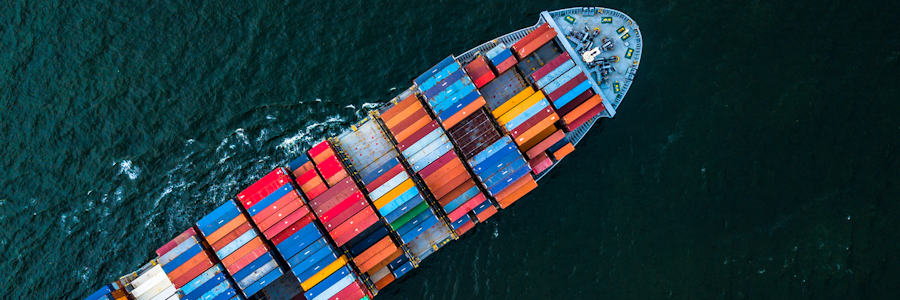News
Sea Shipping Safety

Shipping work often involves a number of different employers and/or contractors who can all affect each other’s activities. These may include harbour authorities, port operators, stevedoring firms, hauliers, ships’ masters and crew.
It's important to have strong and effective health and safety systems in place. These should ensure co-operation, co-ordination and communication between all workers. There are a number of measures you can put in place to ensure effective health and safety in ports and shipping, including risk assessments and training.Most transport-related accidents in ports are serious or fatal. Many different employers’ drivers use ports. Not all of these drivers will be familiar with the port environment. Workplace transport safety will only be managed properly if everyone works together.
Port Hazards
Typical workplace transport hazards in ports
- Loading and unloading of vehicles
- Movement of forklift trucks and other plant on the dockside
- Trailer coupling and uncoupling on the dockside and on the ship
- Vehicle/pedestrian access
- Reversing vehicles on ro-ro decks
- Movement of forklifts in container storage areas and lorry parks
How to reduce workplace transport risks
- Provide appropriate signage and markings
- Vehicles and pedestrians should be separated where they share the same workspace. This may involve excluding pedestrians from certain areas or providing separate pedestrian routes
- Forklifts and other vehicles should be safe, provided with suitable visibility aids, regularly maintained, repaired and inspected
- All drivers should be fit and competent to operate all the vehicles they use at work
Sea Hazards
Some of the most dangerous weather-related threats to shipping by sea are hurricanes, squalls, typhoons and tropical cyclones. All of these types of storms can cause serious harm to, or even completely sink, cargo vessels.While hurricanes, typhoons, and tropical cyclones tend to occur in different parts of the world, they all involve violent wind, torrential rain and surging waves. Hurricane winds can be so powerful that they reach 160 miles per hour.Use the strongest and most seaworthy ships possible. Modern container ships are designed to withstand most storms. In fact, materials engineers now use computers to model the stresses on ship hulls. Once they get the information, they create steel able to withstand the measured stresses.This technique of generating extremely strong reinforced steel, along with using older engineering strategies, such as watertight doors, help to make modern ships very safe.Modern day container ships are also very large, which can help them ride out the intense waves during storms.Size can definitely be a factor when it comes to safety. The world’s largest container ship, the CSCL Globe, is so large it can carry over 19,000 shipping containers. It's bulk allows it to better withstand high winds.But, they are not completely invulnerable to storms.Dodge major storms wherever possible. Advances in weather detection and meteorology have made it possible to anticipate storms much better than in the past.Shipping companies often make use of this information to help steer their ships out of harm’s way. Teams of meteorologists monitor weather patterns and pass information to captains so they can make decisions with as much information as possible.
Technical Problems
Technological hazards include structural problems, engine issues, navigational equipment failures and so on. For example, in 2009, an entire crew of 28 people had to be rescued by the U.S. Coast Guard from the container ship APJ Suryavir, when its engine failed in poor weather south of Alaska.Make sure you have your cargo firmly secured. High winds can potentially cause "domino effects" that threaten an entire ship in some cases.Another important technological hazard is the loss of shipping containers during voyages. Such incidents can create significant losses, as well as potentially damage the ship, or other ships that pass by later on.The World Shipping Council estimates that 675 shipping containers are lost at sea every year. If you consider the fact that a typical container can hold 25-30 tons of goods and a ship can carry 1,000 containers, losing a ship represents a huge financial loss.Thorough inspection of equipment before ships set sail is key. Inspections, testing and certifying cargo ships helps keep them in a safe and working state.Keep equipment up-to-date. If you can see there’s damage somewhere on the hull of the ship, or if any of the machinery on board isn’t working properly, it’s important to get the fixes made before the ship sails, even if it requires a delay in departure.While it’s obviously best to always be on time, it’s better to delay slightly than to risk your safety to make a deadline.
Subscribe
Keep up to date with PHL and all things forklift machinery.